Archived Comments
Enjoy the past comments below for Peanuts online…
Just promoting your art on your blog without doing anything else is a bit like displaying your art in a gallery located in the back of beyond. There are now billions of websites on the internet! To get people to visit your blog YOU have to generate the traffic. That’s why you pay a gallery owner commission to sell your paintings in his gallery – because his job is to find the the traffic – and buyers – and get it in front of your painting and thinking about whether it might be something they want to own. If you sell online you have to be BOTH gallery owner and artist. You can generate internet traffic in any number of ways but perhaps the best is to get out there and start taking an interest in other people’s art and their paintings. You don’t even have to say visit me. If you make an interesting enough comment, they will click the link to find out who this person is – and what their art looks like. There’s other techie SEO stuff as well – but recognising you are part of a wider artistic community is a jolly good place to start.
Robert, I read the piece about Randall Cogburn, and don’t understand. I started painting a year ago this month, and joined a local art guild. We have had shows from sidewalk sales to art gallerys around town, and I also show my art on facebook. I have sold 13 so far, have given that many away as gifts, and have painted live in local charity events that were auctioned off for the cause. I work in acrylics and generally 16×20 or larger. 150.00 has been my top sale so far. I think thats a good start for my first year. The other artist with schooling and many years of experience ( that aren’t selling much) tell me “don’t get use to it” it will pass etc. Loving the ride, Michael Drake.
The paintings of Randall Cogburn are really nice, I agree they should be framed exquisitly and I also like the pricing technique suggested. The art maket is experiencing the same crisis that everyone ele is best of luck to anyone trying to sell, however I am definitely against creating for a market even in the best of economical times. My creativity has free rein, passion, exploring, and painting what I love is the core of my artist self and has no price tag…it is priceless!
While times are tough, now is the ideal time to promote the idea that anyone can have a beautiful original painting. People get tired of scrimping and scraping all the time. For the same price that you would spend to have flowers sent to your mom on her birthday, you could send her a small painting that she can keep for years, that will bring her pleasure whenever she looks at it. I agree that a nice frame will help — anything that you can do to make it more ready to hang is good. For small gift paintings, you might even have a gift box or mailing box with each sale.
You have to sell yourself in other venues. Entering art competitions, gallery representation, joining painting groups, taking art classes, etc. Establish your credentials as an artist and you will reap the rewards.
Size is killing Randall. A painting should draw a person to it from across a room and that demands size. Plein air oil sketches and still life studies are fine for 6 x 9 but consider, where does one hang such a small painting? I’ve kept some 8 x 10 graphite drawings but I can’t paint anything less than 16 x 20 these days and prefer even larger. If a scene inspires enough to paint it how can you reduce grandeur into a 5 x 8? Equally, upsizing often demands more detail and in a peculiar ratio association, sometimes a higher pricetag. Any painting is enhanced with a wider, more elaborate frame.
Thanks for several useful pointers on making the work more accessible to buyers regardless of price points. I’m going in to my website and putting the price stickers back on just like they so many good used cars, ready to drive off and enjoy! Why frustrate the buying public? I have to keep in mind that people who are still buying art these days are still buying art for the same unknowable reasons as they were before the economy tanked. As a textile artist I’ve developed an interesting sideline – my own brand of “peanuts” that has helped me almost make ends meet on a regular basis. I dye cloth for my own work and make much more than I can ever use so I’ve been selling more raw materials – hand dyed vintage cloth – than I have been selling my own work. Not many artists could make a side living concocting their own line of paints but since I was already doing it for my own work it’s been a natural transition and has been helping to pay the bills. http://randomactsofdyeness.blogspot.com/ Because of the “peanut making” I have to hang two hats on my studio door…one for the Artist and one for the Shopkeeper and sometimes they don’t get along. Shopkeeping is time consuming and the Artist is feeling a bit dissed and drifting now somewhere between your “amateur epiphany” and “jaded journeyman”. Smaller pieces have been selling through a variety of online venues, but the Big Things..the pieces I created with gallery representation in mind, are right now languishing in a pile in the center of my studio, rolled up and ready for storage once I can convince my cat that they are not a sofa. http://www.lacativa.com/ In a way I’m kind of grateful to be putting the notion of gallery representation on the back burner. So many galleries are in trouble or in the sad process of folding, victims of the same economy we all live in, it doesn’t seem a viable option anymore especially for my niche medium, textiles. I’m also grateful to have the peanuts sideline. It’s like the Day Job that so many artists must keep (if they are so fortunate to have one!) only I sort through the pieces of cloth I have for sale and get to keep the best, most inspirational pieces for the art I continue to make for my own satisfaction – no price points in mind.
Life is a balancing act. Our physical selves need maintenance; popping out the little “tarts”, or “pot-boilers” can help pay the rent and put food on the able. As human beings, our spiritual selves need nourishing. In expressing our lofty inspirations with no thought of commerce, we artists enrich our own, and others’ existence.
Whoops! I left the “t” out of “table”!
‘Damn’ the downstream distress, damn the prices on the paintings and damn those BlogSpot’s which to me are like mud spatters on the faces of the contenders. Hold them all back– go clean yourself off and close the door to your sanctuary and paint. See yourself for who you are; an individual talent of an artist who seeks to better himself by working it out rather than running with the bulls. Albeit times can be tough getting into galleries but that’s generally where the fun can be had. You’ve created anticipation, looking forward to seeing your work in future spot lights!
Randall, you need to do a google search of your name, and the name of your blog. If they don’t turn up on the first page, you need to learn SEO, Search Engine Optimization, where you are found if someone searches for a painting that might fit their description. Get a counter, (stat counter is one) to see how many hits you get. Take some (groan) art marketing seminars. Good luck, your work is nice, it ought to sell once people find it.
Times are hard, sales are even harder, no one is buying these days. It is discouraging, especially when you work very hard doing a show, at the end of which you feel exhausted and disappointed by the lack of sales. I paint because I love it, so I don’t give up. Thoughts of giving up are quickly banished away by giving myself of day or two of nurturing and, dare I say it, emotional eating. Chocolate works nicely. The dark thoughts pass quickly enough and then it’s back to pursuing my passion with dedication and hope of producing better and better work, which one day, sooner or later, will result in the validation that I seek through shows and sales.
Thanks so much for putting me out there. Any help is appreciated. I changed the buy now deal to just text with a link. I will be doing the other things youve mentioned. Ive questioned whether I wanted to be a peanut painter also. Its mainly the practice that it gives me and will eventually go bigger. In fact I plan on starting this month and will be interesting. Funds is what keeps me from whipping out bigger paintings, less practice that way. I also like the plein air painting style and 6×8 seems hard enough. I guess its from using watercolors a lot and wanting that spontaneous reaction. Freer for sure. I do enjoy the studio work also but does take more time. Anyway, just thought Id let you know I just sold a painting while I was typing this message, it was a Buy Now button, lol !
It’s been drummed into us that any given piece has to always sell for the same price, that you can’t offer it for $250 through a gallery if they think you’ll sell it for $200 yourself, and we’ve followed that scrupulously in my wife’s work. But cyberspace shouldn’t be seen as a conflict with the meatspace galleries. In fact, whenever Larkin’s work is represented by a gallery, the website continues to show the work, with its price, but it clearly says that the work is represented by the gallery, and the e-mail link for the piece goes, not to Larkin, but to the gallery that has the piece. Despite the fact that most of the work on the website is not in a gallery, and note that we haven’t kept stats on this point, my recollection seems to be that of the work that has sold to website visitors, more of it has been sold by galleries than direct. So the galleries that have carried her work have had sales that were the result of her website rather than from visitors that have walked through the door of the gallery. For example, all of Larkin’s new series, Small Treasures, is actually at Raven Rocks Galleries right now, click on any of the thumbnails and you can easily see the way we show that: http://www.larkinart.com/html/8×8.html Actually, I’m really looking forward to the end of the month when most of these will come home, and I can start promoting them directly! Not that I begrudge Windy and Mary their 40%, but if I go bang the drum and sell a few, Larkin probably won’t pay me anything, and she needs the money. I’d never heard the small pieces referred to as peanuts before. I like it.
I find these observations very true as we combine the tangible and intangible worlds more and more each day. I have opted for a co-op gallery setting. Frowned by many in the art world, but very workable for me. The owner is an artist and is very enthusiastic about the work and is in a great location. She also teaches there and sells a few art supplies. Recently, some other artists criticized me for being in what they call a vanity gallery I hate that term .I think that in this economy, trying alternatives is a great way to keep it going. What are your thoughts????
Artists are certainly grabbing at this inexpensive straw but is it really helping with the ‘big problem’? The big problem for artists is the perception of value. Much of the marketing efforts of galleries have to do with creating a context where paintings have value to the buyer. Galleries are convincing the buyer that the painting for sale is worth the price and that is perfectly all right for them to purchase. The gallery is standing behind the painting and the artist giving it their seal of approval. They are giving confidence to the buyer through various means and creating a bit of mystique in the process. A painting has to be ‘special’ in order to form an emotional link with the viewer and galleries do all they can to put a painting in a favorable light where it can find a home. The internet has little to offer as an attractive context. It’s a very boring store. The paintings have to be extraordinary to stand out….at any price! Highlighting the cheap price also creates the wrong impression and lends the deadly air of desperation to the process. It becomes like holding a cardboard sign next to the interstate, ‘please buy my paintings, need food’. It might be the reality but it’s not the right kind of marketing! In the end an artist needs to strive to make a great painting, not a cheap painting! Keeping that goal in mind will help attract buyers.
As a quilter turned fibre artist, lately I am always open to purchasing small affordable works of art that, with the artist’s permission, I can reproduce generally in fibres. I belong to an art centre and am constantly exposed to other media, which is inspiring. For economical reasons, the odd piece I purchase must speak to me, have an interesting element which make them out of the ordinary, such as the cottage door watercolour by June Gerum, which is not exactly reproduced due to the very nature of fabric, threads, and netting. I see a lot of “generic” landscapes, lovely to look at, but there seem to be so many pieces by so many artists that unless there is something different about them, they don’t excite a buyer, especially online as one cannot see brushstrokes or true colours. Many appear flat, with no focal point and after viewing hundreds, they look basically the same. There is something to be said for some formal art training, and I had the benefit of a mentor for a few years, only to learn that I have no trouble selling any of my work if I wished, often before completion, and that nothing replaces a natural ability to translate what one sees into a piece. Because oils, acrylics and watercolour art is rather flat, the look of dimension and texture is difficult to achieve, so a particular style or unique abilities are required to make one’s work more in demand and saleable.
I’m very frustrated. I am a former illustrator for a museum, and have been a successful sculptor, earning my living at my trade for the past 20 years. Several years ago, returning to my two dimensional disciplines, I began dividing my efforts between painting and sculpting, with no intention of abandoning my clients who relished my sculpture. My frustration comes from the fact that my galleries will not accept me as a painter by showing my paintings. Judging by private sales I have achieved, largely by those owning my sculptures, my paintings are quite saleable. How can I convince my galleries to also accept me as a painter, and offer both of my disciplines to their clients?
I just started doing little pieces and post them once a week on my website. They.. 1. Delight my friends and followers to see a little piece each week. 2. Drive people to my website which is good for me and my galleries. 3. Give me more contact with people viewing my art…it can get lonely. 4.Give me a chance to try out new colour combinations, subject matter and composition. They are a source of fun for me and create a product that I can use for charities, gift giving and “pin” money. Art making can get so serious.
A couple of weeks ago the letter was about the lady who had a gallery show moderately frequently but a low prices and the owner called it “throw away” or something. The real questions to me I guess are what do you need to to practice your craft and also what do you do with the work once complete? I will note that work never or seldom seen by others isn’t doing much or sharing much. Within these contexts a few questions arise: How do you pay for your work if you sell nothing How much marketing or advertising can you afford (do) framing costs even at wholesale advertising and marketing costs can you afford websites galleries (“non vanity”) they want 40-60% of retail they want inventory and sometimes they damage or “lose” work galleries (“vanity”) fees and dues galleries (“co-operative) time and dues street fairs (entry fees, time and are can be physically demanding) paid by the artist agents – sometimes they don’t do much for you but like your money calls for entry (fees often subsidies for the underlying operation/gallery ??? charitable org maybe and sometimes they use to get other paid business) paid from sales agents (you have to give them materials and I’ve had them not returned when it wasn’t working) contacts with decorators and interior designers – you gotta find them and wow them so they will sell their clients and you gotta support them – really specialized agents restaurants or other alternative spaces often will charge little for the work being hung – they are getting free decoration but visitors may not be in the art buying mood and you have all the inventory and setup costs Can you afford to donate to hospitals, nursing homes etc? Calling it advertising – which can create leads but sometimes is really just a gift. The “collecting” public considers non vanity non co-operative galleries the place where “real art is” and there are pluses and minuses to this type of thought. However, they are among the hardest to get into. That said moving from one phase to another can work from them – work out a transition with the right gallery, “having sold 20k of work in two seasons on the street faire circuit, this artist is ready to move into or has been “discovered by” ABC supports new/mid career artists like. Nothing will get the attention of a gallery more than sales. Street fairs generally require pictures of “professional looking booths in addition to good art, invest time and effort into developing a good application packet and researching the fairs you can reasonably do. Budget plenty of travel time to and from etc as well. Remember too you have to get the booth set up and torn down and packed into some sort of vehicle. This can be demanding physically or expensive. Also you have to monitor the booth for sometimes long hours in various weather and be able to tolerate eating and the expense of fair food, or be very good at cold ration camping food for at least a few meals. Honest answers to the above, will help guide you what you can and should be doing with respect to marketing. On the framing note – you’ll do best if pieces are standard size or already framed especially at street fairs. If you do your own framing you should seriously consider doing it your self for budget reasons. If you have enough sales you can hire a framer or sub it out to a wholesale framer who will require volume commitments as part of giving you the best prices. Know your self especially when approaching various people – do you fit or would you be unique? Street fairs generally like new things and can be tough to get into if you are too much like the other stuff at the fair. It’s worse at galleries – you have to be like them but not……. If you are a painter, I wouldn’t approach galleries that devote them self to strictly old master painters, print making, ceramics, photography etc. Then get a feel for style and subject matter. Don’t approach street fairs if you are controversial with subject matter etc. Some shows have a flat rule we won’t show a naked breast – don’t care if it is authenticated museum deaccessions sold for a $1. There may be the same types of issues for religious art, nudity and politics in many corporate spaces. (For me of course this creates a conundrum – my work flow is photographic but everyone calls me a painter – a complement to me since it try to be a modern Pictorialist and pick up where Stiglitz understandably left on and have a “nice chat” with painters about art. That said many paining people say – interesting wish you had done that with paints and brushes and photo places say ” we show photography here” – told him my work flow – camera, computer, printer which is used by millions and asked and he repeated we show photography here – this a pretty major photographic gallery owner. Remember it is sometimes the chicken and the egg and can be very frustrating. Sales help sales, gallery access helps gallery access, fair access helps fair access etc. No matter what you do, keep good records of what you’ve done so you can a) figure out what works and why and b) be able to tell others including the Taxing authorities.
Even Beethoven wrote “bread and butter work”. There is no shame in appealing to the masses to put food on your table. It can fund the deeper and more meaningful artwork, We worry about prostituting ourselves needlessly. But you have conveyed a good point regarding galleries: Don’t do that which would undermine your sales from a gallery. You might need to create an entirely different genre and review your contract, so as not to step of any galleries right to represent.
You hit the target with good advice on selling. You consistently cover a lot of territory in terms of being an artist and the search for creativity, process, product, commercialism, self-expression, etc. Many endeavors in our lives are not financially profitable.
I think that you might consider whether the subject matter that you paint is something people are going to be attracted to. Close up pictures of girls in swimsuits with obscured faces is an unusual choice. I think that you would need to target your advertising towards your perceived audience.
I know– we are suppose 2 have a –motive– 2 paint. I.’m not a professional–but paint –CAUSE– that’s what I do–& like it!! As for selling– try & paint what sells– I know we are not suppose 2 do that– but an artist has the right to do whatever!!! Why not put a price o n —that will sell the painting– instead of pileing them up in ur closet. I know there will be a rash of harsh opinions on all this– so gO AHEAD!!!!!!!
I’d like to see what mars has to offer earth :-)
I agree with sarasuperid’s comments and think the subject matter here is VERY important to consider. People often say to me, ” I don’t know art, but I know what I like”, which translates to; ” I don’t know art, but I like what I know”. I believe that there really has to be more of a personal connection in order for someone to have an emotional response and want to own the piece. To me, the parochial images here look like painting exercises done from snapshots, which is fine for practice but will attract a very limited audience. Not all paintings need to be sold. Many of mine (100’s of them) were merely educational stepping stones. I believe good art is not so much about how it looks as it is about how it makes you feel. What is the center of interest, point of view, message or feeling you are trying to convey?
I’m not an artist and have difficulties signing my own name at times but I like to see what’s going on and reading Painters Keys and following the threads give me a window into the wonderful world of artists. And so with this said, I wonder – This artist inhabitants a warm area and does enjoy the female body with its shapes and curves, who doesn’t? He see’s them readily but the viewer might see him as a Peeping Tom rather than an up coming Monet. My two cents worth – I would say venture out there and find a model who is willing to work with you – and pose them visually and aesthetically (props and such). Bring the viewer along for the experience, in short – don’t be afraid to go after the real thing.
For Martha Pettigrew: The same people who love your sculptures will not necessarily love your paintings. I’ve noticed the same thing myself in switching from sculpture to painting. Could be the case of a different clientele for each.
I started daily painting over a year ago, and I feel it has revitalized and revolutionized my development as a painter. At the time, I felt rather “stuck” in my progress after painting many years primarily from photo reference, as so many of us do. I consider this practice both resourceful and yes, perhaps even noble. It’s very honest art work, for me at least. Far from being the “line of tarts”, the point of the exercise IS the exercise. As for the marketing of daily paintings, they seem to me to be the perfect “lost leader”. Blogging and selling on eBay are a sign of the times, and offering a small piece of art that even entry level collectors can afford, not only provides some nice cash flow for the painter, but puts original art in the hands of the people. And there is some really good art out there in the ranks of the daily painting movement. And people often say “Ohhhh,nice one! I gotta have that little jewel”. Galleries have so far understood that it is my right to market myself, most especially in an economy that has many galleries flailing. In addition, I haven’t typically wanted to sell these small pieces through galleries as there isn’t enough money in it for them or me. I think it’s a win-win. As well as offering daily paintings for sale, I enjoy the opportunity of offering to followers some information about what I am learning that may provide some insight or value to them. What I’m trying to say is that the producing and blogging of these paintings is about sharing and personal growth. If there is a market for the paintings, bonus. If not, that’s ok too. I’ll be doing them for a long time to come.
I have recently been struggling with the question of how much I want to “work” at selling my art. I’m fortunate that I do not “need” to sell it for a living. But the question plagues me, “Why keep painting if the paintings go nowhere”. To figure these things out and see exactly what the possibilities are I have recently taken some marketing workshops. One from Alyson Stanfield was excellent and motivating, but still left me with questions of a more personal nature. For now my conclusion is that I’m not motivated to go “full bore” but do want to do something to “get the work out there”. I agree with Alyson when she said that “The work is not complete until it is viewed”. I plan on taking as full advantage of the Internet as I can, because this does not require as much time away from the studio as festivals or schlepping to galleries. I have a small local gallery that I deal with and because I’m in our local art guild there are venues available to show my art. I also donate my art frequently. In the end I am satisfied to SHARE my art this way. If some one loves something enough to buy it at what ever price, that is all the more gratifying.
Robert, Thanks for putting my comments in here. I think we got a good cross section of painters comments for Randalls ideas to consider. For me, making the work affordable to working class people gets my name and artwork out there, and hanging on someone elses wall to enjoy.
I have been using the blog format and sending out a photo of one small painting a week for over a year now. The art image is linked to e-bay and most are for sell for $99. This has worked very well because I send them only to people I know (700) and the painting is just a jumping off point for talking about art and the making of art. Keeps readers interested enough to click on the painting. You can pull them up on www.parispruden.com and click on Blog. Thanks, Nancy Paris Pruden
I keep my functional work very reasonable and have even undercut the average price of say ceramic mugs, bowls, platters etc just to move product out and make room. Art should not be restricted to those with disposable incomes, it ought to be available to everyone regardless. That ideal is also why I do accept trades at times :)
Brian, I’m with you. Once active in the gallery scene in my region, I now sell mostly out of my studio because people walk or drive by my storefront windows — which are full of art works that change often — and become interested. I have a standard set of prices that I generally charge, but if someone falls in love with a piece and it’s clear they can’t purchase it because they don’t have an extra few hundred dollars floating around (I don’t either), I offer them a discount, sometimes a steep one. I have no interest in making my work available only to people who are financially very comfortable. I’m interested in making the work available to anyone who loves and is inspired by it.
One of the good things about selling your own work, through any medium other than a gallery is you can work with the pricing. I set prices on my work but if I feel a potential customer is interested I work with them and lower the price where I’m comfortable if necessary. Someone above said it correctly. If they really love the work and are not looking for bargains, I still make money. I’ve been on the internet for over ten years now and make sales of my larger works. I’ve also done Street Fairs and sales of smaller work are beginning to pick up. People still do seek affordable “quality” artwork. An added plus is being there on site to sell yourself as well. People like to connect with the artist. I always demonstrate throughout the day and that makes people stop and visit or just look, but I can talk with them if they stop. I also let (some) kids try painting and have sold to the parent who wanted the piece her kid worked on. You never know who or why people buy. I’ve had someone buy for someone else thinking they would love that piece. You have to be accessible to a buyer. As for fees, they aren’t too much of a hassle. It’s when they couple that with commissions that get my goat. I’ve gotten commissions from street fairs to do portraits. What I would love to have is a storefront with studio/living space. I would paint in view of the public. People are fascinated when watching an artist work. I know I am.
I have bartered my art for a stay in a mtn cabin, a laptop, and other computer related items. Anyway i can get to an admirer. Afterall, for me, thats one of the reasons i paint, to have someone say ” I really like that lil jewel” or “Awesome”.


Winter Blooms oil painting by Nancy Medina, Flower Mound, TX, USA |




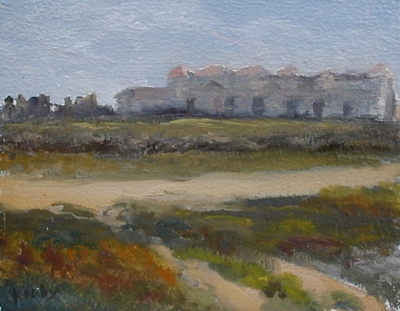
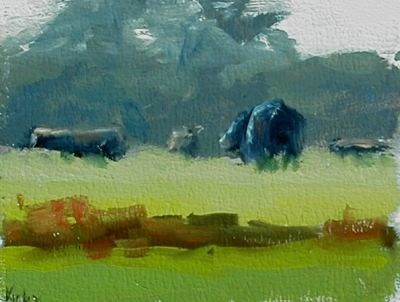
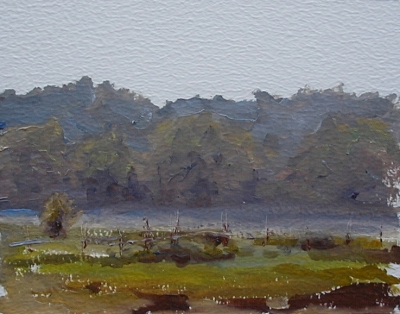
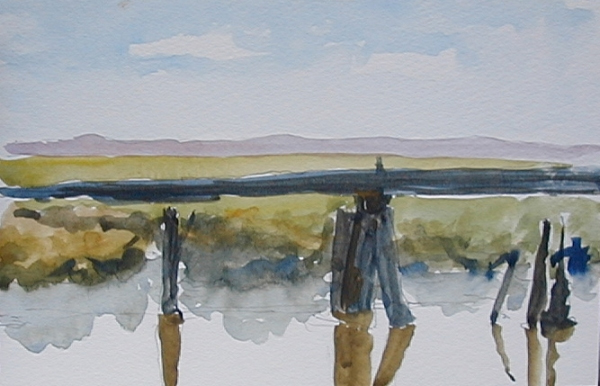











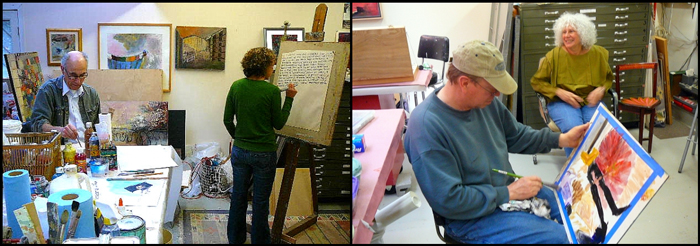



I totally agree with your point of view. However, there are a few that seem to sell everything they put on line, ie: Carol Marine, Abbey Ryan, Duane Keiser.